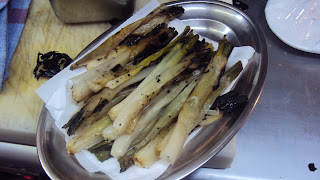“If we had
had any idea about the world of business and starting a company we would never
have tried because objectively the project was crazy. Yes, I am convinced: we
did it because we didn´t know it was impossible.” Christóbal Colón, President of La Fageda
Corporation.
Last week I
went on a school outing. Tere´s class was studying the business model of La Fageda
- a dairy company in the Garrotxa national park, northern Cataluña - and they were
invited to take a tour of the set-up. I gladly tagged along.
What makes
La Fageda unique is that the business was started to create jobs for those
suffering from mentally illnesses. Colón, a psychologist, realised how
important work was to give his patients a sense of purpose, increase their
self-esteem and achieve a level of independence. After years of “labour-therapy” in which he
simulated a working environment, he decided to start a real company to create
real conditions. La Fageda was, therefore, born as a means of offering more
authentic psychological treatment: It also happened to be a massive business
success.
La Fageda
means wood of beech trees, in Catalan, and as we turned off the main road we
crawled along a single-track road with the sun blinking through budding
beeches. I could not quite believe that this was the entrance to a dairy
production farm and factory with profits of 9 million Euros in 10 years. It all
seemed far too simple and, most surprising of all, beautiful.
On arrival
we were given a tour of the farm which homes 500 Canadian Friesians. Fine
ladies all, sitting together, chewing the cud and listening to Bach. From the
rural ideal it is a few dozen yards to the factory where the milk, yoghurts and
puddings are made. The milk passes directly to the factory throw a conditioned
pipe-line and we saw the employees regulating the fermentation process and
packaging the products.
The company
employs 86 workers with psychological disabilities and mental illnesses. All
employees have psychiatric support whenever they should need it and they have
created that utopia in business – happy workers and healthy profits.
What really
compounded the excellence of La Fageda, in my mind, is that there is no mention
of the employees’ mental problems. In the world of business the aim is profit
and without a doubt portraying a philanthropic angle would increase sales and
the company´s value in the public´s eyes. However, our guide said it would be
wrong to highlight “disabilities” for a job well done. It would be
professionally hypocritical to reward someone´s labors with a wage and then
profit from their supposed limitations on mental grounds. The focus is on
finding and nurturing the employees´ abilities, as is true of any successful organization.
In fact it
is now me who is focusing too much on La Fageda´s workers and ignoring their present
raison d’état. The aim of La Fageda today is to produce delicious dairy products
of the highest quality and I can say, categorically, that their greek yoghurt definitely has a dollop of ambrosia
and a sprinkle of Bach.






